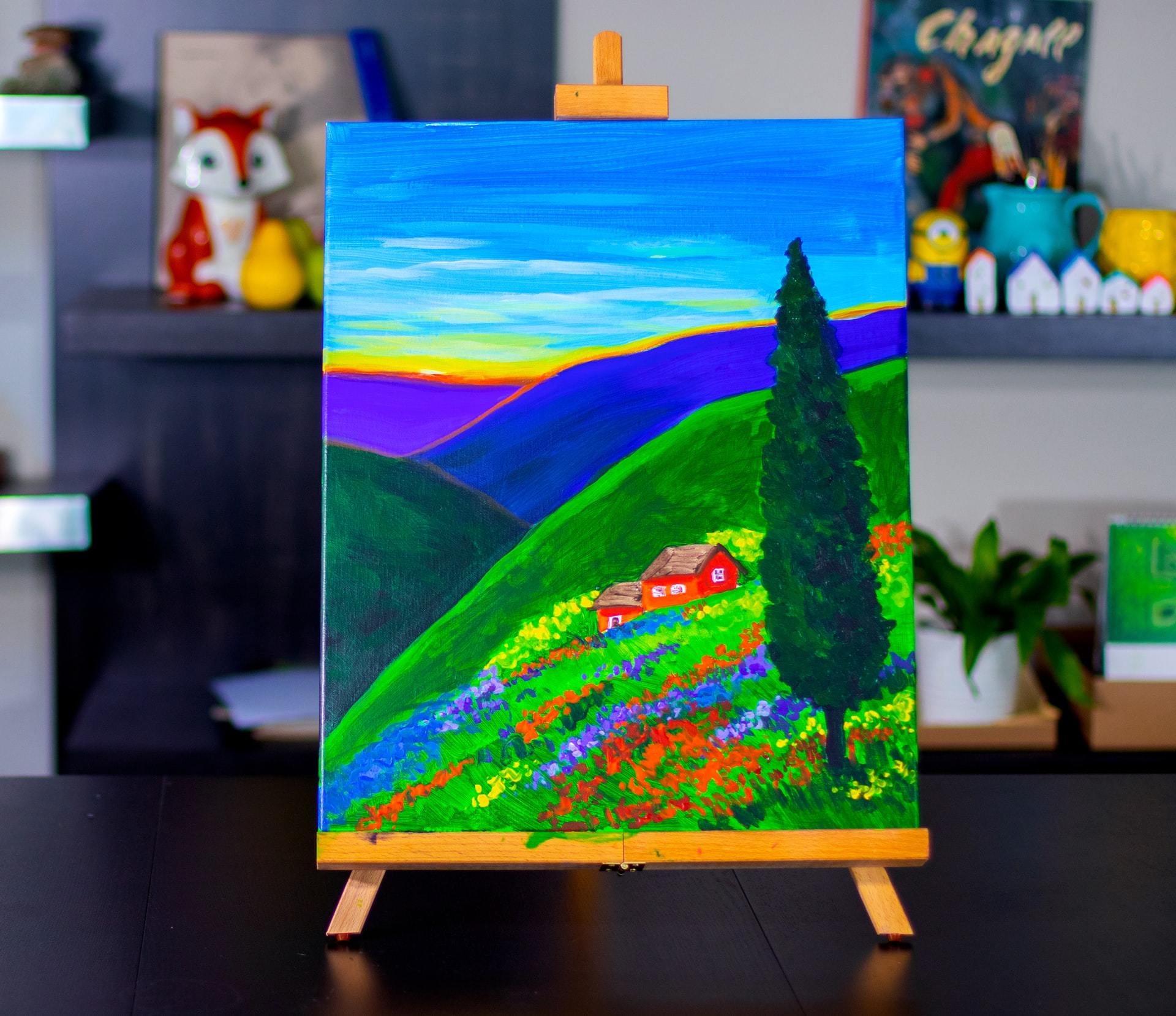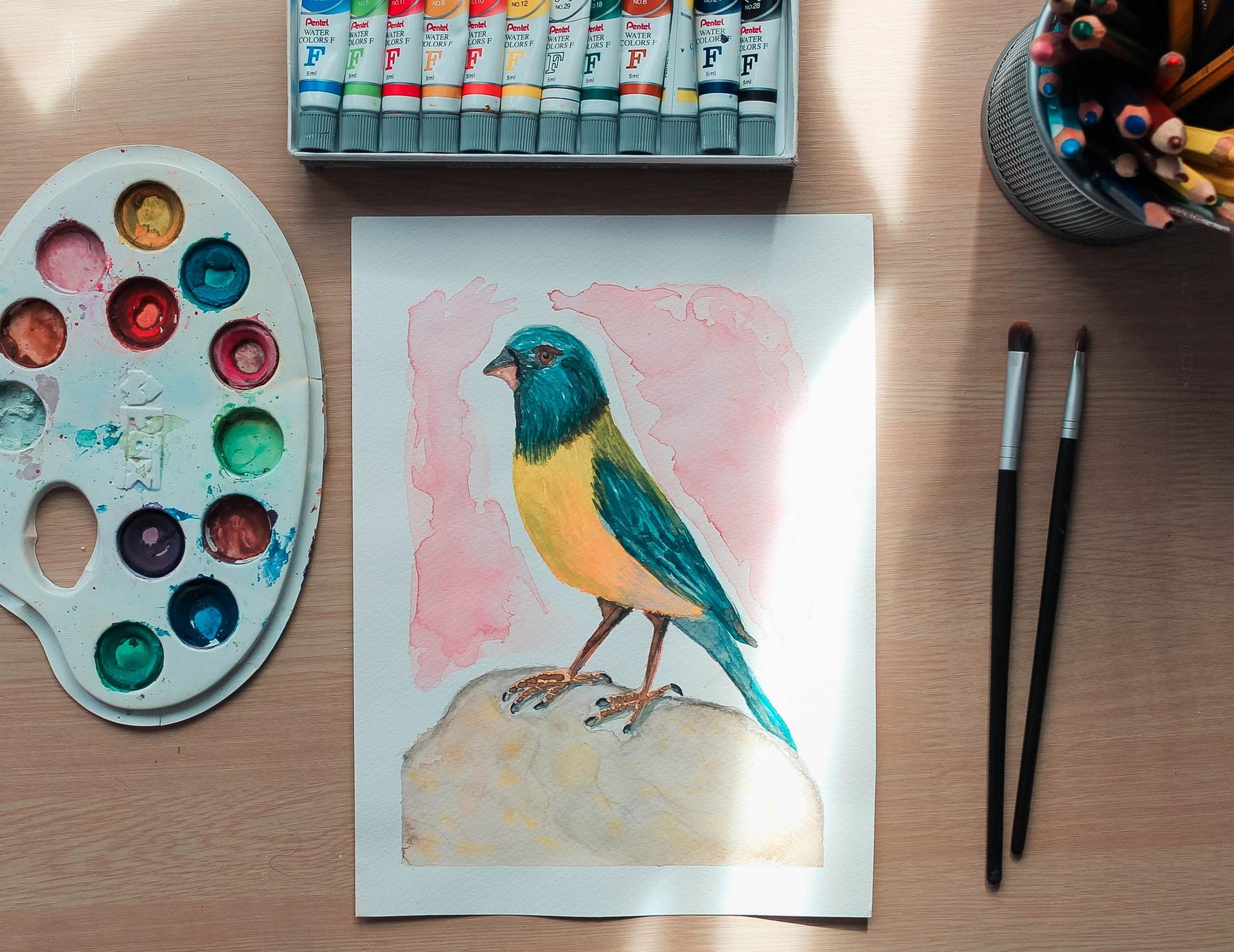
Different Acrylic Painting Techniques that You Should Try
If you’ve tried Paint by Numbers and finished the design with heaps of acrylic paints to spare, don’t throw them away just yet! Instead, use them to improve your painting skills, or perhaps for your small painting project. In this article, we'll show you different acrylic painting techniques that you can try to apply in your later artworks.

Usually, once finishing a Paint by Numbers canvas, you’d be left with an astonishingly great amount of paint, typically around 50% of paint per pot that you can use for another painting. You can also use it to improve your painting skills by learning how to blend and mix colors, as well as learn different brushwork techniques.
Acrylic paint is the most suggested medium for aspiring artists. It’s easier to work with compared to other mediums like oils or watercolor, it’s cheaper than oil paint, and it has very good coverage. The colors are vibrant, with creamy texture, typically providing you with an opaque finish once dried. Moreover, you'll be able to attain completely different textures and finishes with the assistance of different tips and tricks. The only con with this medium is that in contrast to oils, it dries quicker, thus making it tough when it comes to blending with other colors. Despite its fast-drying characteristic, there are available art supplies which will help create slower to dry acrylic, like paint retarders.
Practicing Your Brushwork with Different Acrylic Painting Techniques

One thing you should know about acrylic paints is that they’re a versatile medium compared to others like gouache and oil paint. Acrylic will somewhat act like both: if mixed with gels or oils, acrylics will transform oil paints, thus creating a thicker consistency and making dry slower. Since acrylic is also water-soluble, this will produce gouache-like consistency and effects.
Moreover, the type of brush that you're using will create a significant impact on the finished look of your painting, so learning the different types of brushes and their appropriate usage is also important.
Dry brush:
Use a decent quantity of paint and apply it on your dry canvas for unsmooth and visible strokes.
Wet brush:
To attain a lot of loose consistency, wet your brush and blend it with the paint on the palette.
Washing:
Dilute your acrylic with a drop or 2 of water for a translucent finish.
Splattering:
Wet your brush and dip it in paint, and flick its bristles. You can also use an old toothbrush if you want to have more control over the splatters.
Sponge:
Use an old sponge, dip it in paint and gently dab it on the canvas for a blended and textured finish.
Impasto:
Using a palette knife (or plastic knife), take some paint and directly transfer it to the canvas, apply it directly to build a thick oil-like texture.
Gradient:
Directly squeeze the colors of your choice on the canvas (darkest to lightest, it’s okay if they overlap a bit). Wet your flat brush and begin spreading the paint from darkest to the lightest color.
Scumbling:
Apply a skinny layer of paint on the canvas and let it dry. Once dried, use another dry brush, dip it in paint and rub it on the canvas.
Scraping:
Apply dots of paint onto the canvas. Use a flat object like an old credit card or ruler, then scrape the paint in different motions, from up to down, left and right - you decide.
Water drops:
Dilute your paint with a touch of water and apply it onto the canvas. Then, using a pipette or your fingers, sprinkle drops of water on the layer of paint.
Smudging:
Apply dollops of paint directly onto the canvas, see that they should be overlapping from one another. Then, with a dry brush, smear the colors, making a thick, blended textural effect.
Silhouette:
Make a cut-out of any form or object you prefer. Place the cut-out at the top of the canvas and apply a layer of paint. Once dry, raise the cut-out and paint it with black, or any color that contrasts against the background.
Glazing or Washing:
Thin out your acrylic paint with water and apply a layer to the canvas. Repeatedly do the step with different colors to form a different shade whenever you apply a layer on top of every layer.
Glitter:
Add glitter to your paint or use a ready-made glitter acrylic paint to add a touch of sparkle to your canvas.
Metallic:
Add mica powder to your acrylic (or scrape some used eyeshadows then incorporate it to the paint) for an additional shine and metallic end.

More Acrylic Painting Tips:
Priming Your Canvas: Is it Necessary?

Priming your canvas is a vital preparation step in painting, whether or not you use an acrylic or paint. After applying gesso to your canvas, it'll be smooth and less absorbent, hence making it easier for you to apply and blend your paint. However, you'll be able to skip this method because as long as you use a pre-primed stretched canvas, then you’re good to go. If your canvas isn't pre-primed, then you've got to go through this process.
Misting
Since Acrylic paints dry very fast, misting water to your palette is a good solution to avoid them getting dry when still on the palette. Use an old spray bottle and fill it with water. Spray water on the pigments within the palette when necessary-- especially when it looks like it’s about to dry out.

Sealing/glossing: Is it important?

Once you finish your painting and it’s completely dry, then it's time to go through the final, yet another vital process: sealing. This is often a crucial method if you want your painting to last longer. The seal can shield your canvas from yellowing and dirt.
Different Types of sealer Finishes:
Matte finish: this type of sealer will lighten the dark colors of your design. It has a less shiny end compared to the glossy or satin type.
Glossy finish: this type of sealer can brighten your artwork, giving it a very shiny and glaring finish.
Satin finish: this type of sealer is somewhat between matte and shiny, giving a very “softened” end to the colors of your design.





